Peter’s denial of Jesus reveals how Christ disciples us in our moments of weakness so we can experience authentic transformation.
The following is a manuscript adapted from a sermon preached by Chad Harrington at Harpeth Christian Church in Franklin, Tennessee, on March 12, 2023, on day 15 of a 40-day church-wide fast.
Today’s message is from Luke 22:39–62, which a is precious passage about the prayer of Jesus in the garden of Gethsemane and Peter’s denial of Christ in the courtyard of the high priest.
The text reads (NIV, 1984):
Jesus went out as usual to the Mount of Olives, and his disciples followed him. On reaching the place, he said to them, “Pray that you will not fall into temptation.” He withdrew about a stone’s throw beyond them, knelt down and prayed, “Father, if you are willing, take this cup from me; yet not my will, but yours be done.” An angel from heaven appeared to him and strengthened him. And being in anguish, he prayed more earnestly, and his sweat was like drops of blood falling to the ground.
When he rose from prayer and went back to the disciples, he found them asleep, exhausted from sorrow. “Why are you sleeping?” he asked them. “Get up and pray so that you will not fall into temptation.”
While he was still speaking a crowd came up, and the man who was called Judas, one of the Twelve, was leading them. He approached Jesus to kiss him, but Jesus asked him, “Judas, are you betraying the Son of Man with a kiss?”
When Jesus’ followers saw what was going to happen, they said, “Lord, should we strike with our swords?” And one of them struck the servant of the high priest, cutting off his right ear.
But Jesus answered, “No more of this!” And he touched the man’s ear and healed him.
Then Jesus said to the chief priests, the officers of the temple guard, and the elders, who had come for him, “Am I leading a rebellion, that you have come with swords and clubs? Every day I was with you in the temple courts, and you did not lay a hand on me. But this is your hour—when darkness reigns.”
Then seizing him, they led him away and took him into the house of the high priest. Peter followed at a distance. But when they had kindled a fire in the middle of the courtyard and had sat down together, Peter sat down with them. A servant girl saw him seated there in the firelight. She looked closely at him and said, “This man was with him.”
But he denied it. “Woman, I don’t know him,” he said.
A little later someone else saw him and said, “You also are one of them.”
“Man, I am not!” Peter replied.
About an hour later another asserted, “Certainly this fellow was with him, for he is a Galilean.”
Peter replied, “Man, I don’t know what you’re talking about!” Just as he was speaking, the rooster crowed. The Lord turned and looked straight at Peter. Then Peter remembered the word the Lord had spoken to him: “Before the rooster crows today, you will disown me three times.” And he went outside and wept bitterly.
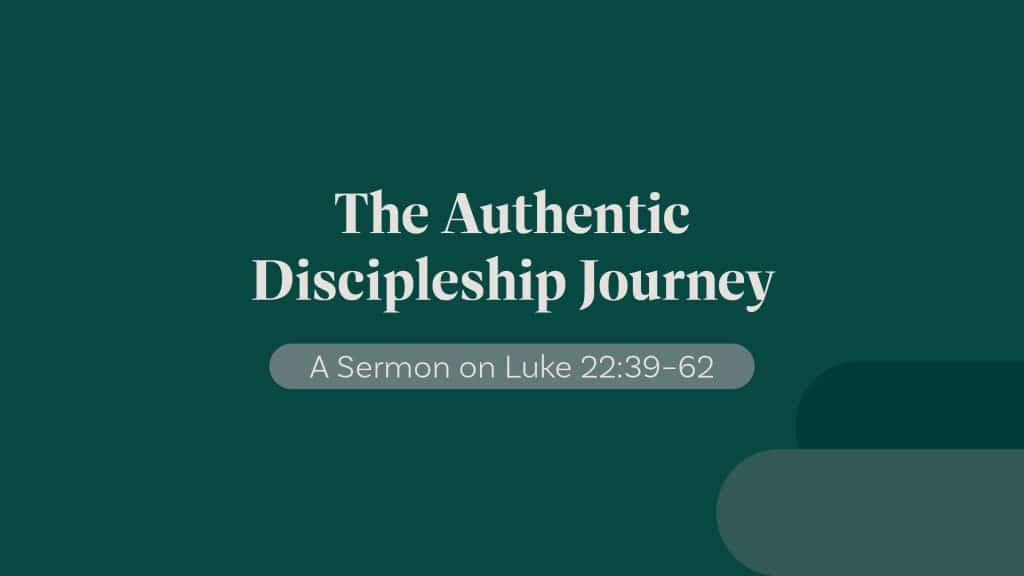
In our discipleship journey with Jesus, as we see in this narrative as it unfolds, you have a choice between two paths: the authentic discipleship journey, or the false discipleship journey.
- The false discipleship journey is one where it’s all up in our heads and contained within our hearts: It’s private; it doesn’t impact our family, our work, the world, or our bodies; it’s just inside. Our lives aren’t affected comprehensively.
- The authentic discipleship journey, on the other hand, is where we live as a unified whole. What’s true on the inside is true on the outside, and what’s true on the outside is true on the inside. That’s the authentic discipleship journey.
Fasting surfaces all of the things in our hearts. Sometimes, we’re like, “Where did that come from?”
We’re on day 15 of a 40-day fast, and fasting, especially fasting for a long time like 40 days, gives us an opportunity to bring our discipleship journey into a new place of authenticity, even down into our bodies.
Have you ever thought about the body side of discipleship?
It’s kind of interesting. Fasting can show you where you’re at, at least bodily, in the discipleship process, but we’re not bodies over here and spirits over there. We’re an integrated whole.
So what surfaces is both physical and spiritual? Is anyone feeling a little more irritable on certain days or at certain hours of the day?
As a way to encourage you during this long fast, I wanted to start our message today off with a word of encouragement during this long fast from our own Kristi Wilson:
All sorts of things come up when you’re fasting, all sorts of grumblings.
The truth is that fasting really does reveal things that were sort of hidden in our lives, and we’re like, “Whoa, where did that come from?”
Fasting exposes our weaknesses.
Today I want to help you see this fact as a gift and not as a discouragement. We’re tempted to give in when things like that happen: when we have the cravings, when we have the impulses, you know?
Have you found yourself doing weird stuff? It’s kind of like when:
- You’re addicted to your phone, you go to check it, but you don’t have anything to check.
- You go to the pantry and you’re like, I’m actually not hungry. I just went to the pantry.
- You go for your chocolate stash, but it’s like “Who did that? I can’t believe my hand reached for that!”
That kind of stuff happens, and it’s at that moment, not only when we fast but also in our discipleship journey as a whole, that we have an opportunity.
Our opportunity comes in those moments of weakness:
- Where we sin when we aren’t wanting to sin
- When we sin in a place that we thought was in the past and that that we had put it to rest
- When we confessed that, we repented of it, and then it pops back up
In those moments, the last person we want to see is Jesus. But it’s in those very moments when Jesus sees us that he wants to disciple us. In fact, I would say that what we do in those moments matters immensely.
We must let Christ disciple us in our weak moments in order to experience an authentic discipleship journey.
A Short Story of Weakness on a Walk
My family went on a little hike at Henry Horton State Park yesterday, and there was a moment when my son Joshua was experiencing some weakness. He is teething again. (I think it’s his final tooth.) So we’ve learned to think whenever he’s extremely irritable and incessantly crying: He must be teething. He starts breaking out with a little bit more eczema. Then yesterday it was cold and the kids were hungry. So it was this triple threat.
So we’re on this hike, and I was like, “I want to enjoy this leisurely hike along a smooth path.” We had a rough start: Joshua was falling a little bit because he’s only 19 months old. Then he’s just crying and crying and crying. The crying doesn’t stop for very long, and he falls again. It’s like, “Lord, I’m just glad we’re here.”
My daughter Emma ended up saying it was a great hike: “A really fun time.” We made it half of 0.15 miles, and then came back. And that was about it. It was a success and took us one hour.
I realized when Joshua was asking for food and crying and whining—and we are trying to begin training our children not to whine but to ask and say “please”—I was tempted to just let him be the unformed Joshua that he currently is when he needs to be trained up.
But I was reminded of the heart of God to disciple us in the hard moments.
We stuck it through, and he got his food and we tried to disciple him in that moment.
And in this passage we read about an important window into Peter’s denial of Jesus:
Jesus didn’t withdraw himself from Peter’s weakest moments.
I think you can make an argument that Peter’s denial of Jesus was his very weakest and worst moment. Jesus didn’t blow it off. He didn’t shrug off Peter’s denial and his lies. But he met him there in it, and he discipled him through it.
So on our discipleship journey, we can choose the false path, which is to hide our weakness from others, suppress it from ourselves, and pretend before God like it’s not there. That is, we can just go about business as usual.
But when our weaknesses surface, when our sin emerges, when the monster within us rears its ugly head, we have a choice in that moment: Will we walk the authentic discipleship journey, or will we choose the false discipleship journey?
I’ve often wondered, Why did Jesus choose Peter as a pillar apostle? Peter sure seems unstable if you ask me. And my guess is—I can’t prove it—but my guess is it’s because he had chosen time and time again to let the inside and the outside be the exact same.
Peter chose the authentic discipleship journey path at each mile marker.
So we can look at Jesus as our guide on the authentic discipleship journey and at Peter as perhaps Jesus’ foil. So let’s look at each of them.
Jesus, Our Guide
Jesus, it says, went out to the place on the Mount of Olives “as usual.” What’s your habit of prayer during this time of prayer? It’s not just a time of fasting during these 40 days of Lent; it’s a time of prayer and fasting, which is just an extension of our prayer. What is your habit? We see in Jesus’ example, which is our guide to authentic discipleship, that:
- He had a place he regularly went to (the garden of Gethsemane),
- He had a posture: he was kneeling in submission to show humility, and
- He had a purpose in his praying: the will of the Father about the cup before him.
What’s your purpose for praying during these 40 days? Have you decided?
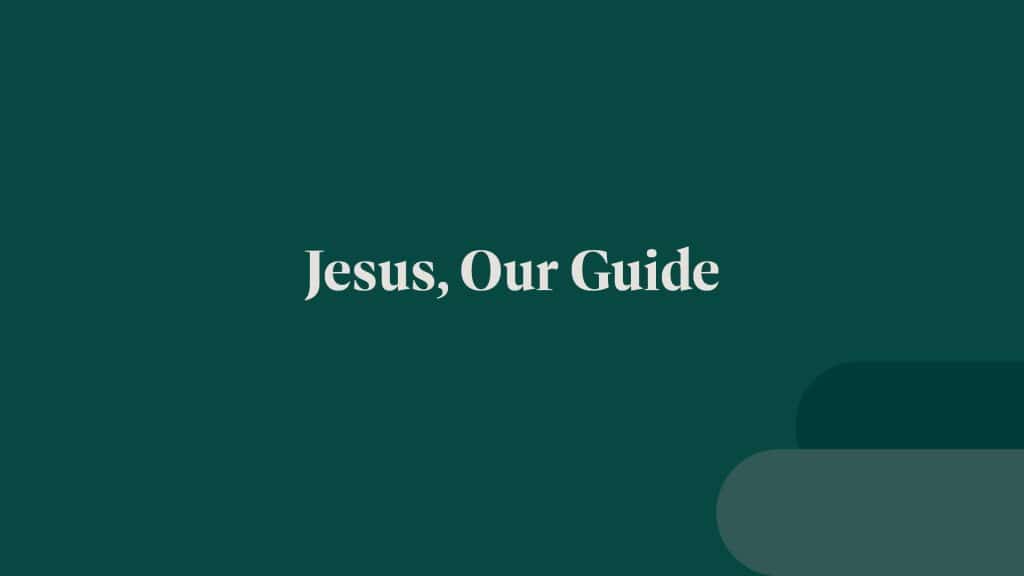
Why would Jesus kneel to pray?
What we do with our bodies actually matters in prayer, and that’s what Jesus shows us, in part, in Gethsemane. He was brought to his knees.
Kneeling at the Altar
I remember I was at Asbury Theological Seminary in a very vulnerable season of my life. It was a season of my spiritual journey where I couldn’t make it through a chapel service without crying. And I’m not much of a crier. So it was like, “What is happening inside of me?”
And I think it was God making me more authentic, making me making me more whole.
During chapel one day, I remember being in worship and being like, “I just feel like I need to get on my knees in this moment.” But I was in a pew. Asbury is a school in the Wesleyan tradition, so I was in this pew, and there were two guys between me and the isle. And I was like, “That’s gonna be tough.” I didn’t have room to kneel where I was, so I thought, “I better go to the aisle.” So I was like, “Excuse me, excuse me.” And then I was like, “Okay, this is gonna be awkward if I kneel in the aisle.” I just wanted to get down on the ground. And then I realized that’s why they built the altar.
So I walked to the altar and I prayed there. The amazing part is that I looked to my sides after the song was over, and the two guys who had been in my way were now kneeling next to me by the altar—because the Holy Spirit was stirring in me, and it spread to those around me.
I had allowed what God was doing in my heart into my body.
That is an opportunity we have when we look at Jesus, our guide, during times of weakness. We can feel it in our knees. We can feel it in our bones. It may not be Cadbury chocolate speaking, but it might be the Holy Spirit.
Jesus, Our Model of Authenticity
He was totally true on the inside and outside. And what I find remarkable is that he told God about it! He told the Father as God the Son. He said, “If it’s your decision, take this cup from me; yet not my will, but yours be done.”
Jesus had the ability to know himself deeply and deny himself radically at the same time.
I think he is a great model for us to both know ourselves and deny ourselves.
I remember in college, I thought when we were called to deny ourselves, it meant we deny everything about us, but that’s not so. We deny the things that get in the way of the cross for us.
Jesus knew that he could express his genuine desire: I don’t want this; yet I will do it and I will want it because of your will. I will let you impact me, Father.
That’s in contrast with Peter.
Peter, the Foil
Now, Peter had a good trajectory, but this was a rough moment. Peter, the foil of Christ in this narrative, reveals his weaknesses, which come up in three distinct scenes. Peter is under some stress, and he goes through the three common responses of flight, fight, and freeze. That’s where I wanna go with us now.
1. Sleeping in the Garden: Flight Response
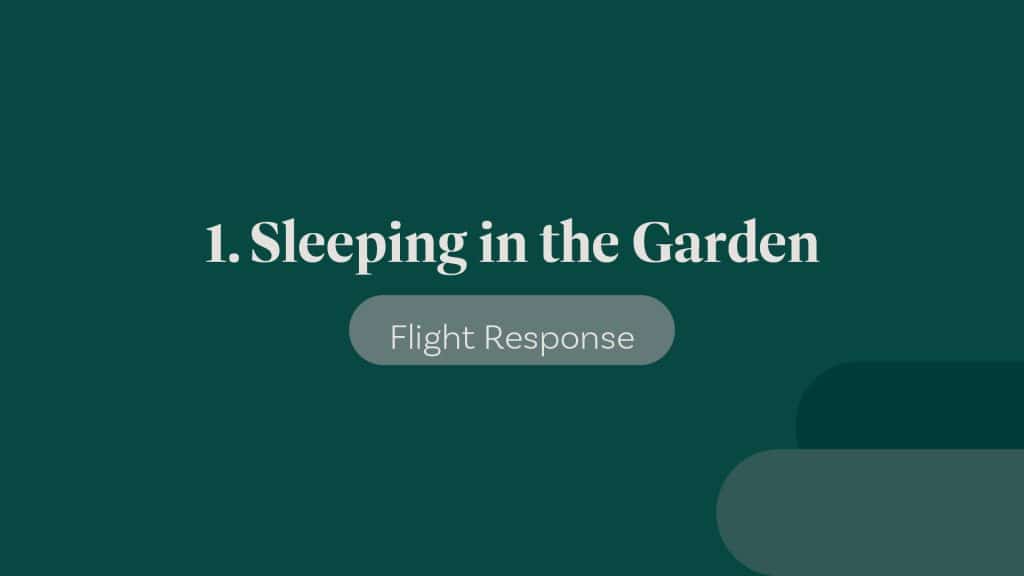
The first one is Peter sleeping in the garden. This is his flight response.
Peter didn’t have enough strength spiritually or physically like Jesus did to stay up and pray. Jesus told him pray, but he couldn’t do it. He was weak.
Now, Peter didn’t physically flee the scene. But spiritually, he gave up.
Have you ever felt weak when you’re supposed to be spiritual? You kind of want to hide it?
- You’re supposed to read the Bible.
- You’re supposed to pray.
- You’re supposed to disciple your kids.
- You’re supposed to go to church …
… but you don’t want to.
Sometimes we can respond with flight, spiritually, even though our bodies show up.
We can leave our marriage on the inside and withdraw emotionally. Even though we haven’t left the marriage contractually, we can give up on change itself because we’ve stopped truly believing that God can change us.
We’ve flighted because we’re stressed with life.
Christ says to Peter—and by extension all weak disciples—to pray in those moments. You know, sometimes in our church culture, when someone confesses their struggle, when we see them being weak, like Peter was sleeping, we’re tempted to be like, “You know, that’s okay. Just give it a try next time. That’s totally understandable. There is grace for this.”
And you know what? There is grace for that.
What’s interesting in this moment is that what Jesus says is actually a moment of correction. So at a minimum, let’s listen to Jesus speak to us in our moments of weakness.
He says to Peter and the others, “Pray.”
So pray if you are experiencing weakness now or in the next 25 days of this fast, or any other time. Change your mind about your posture toward other people: Decide to let them speak into your life.
Confess it to God. Just say, “God, I am weak. I messed up.” A spiritually mature person:
- Quickly repents
- Quickly brings it to God
- Quickly deals with it
Tell other people! It’s okay to say, “I failed today.” That’s not only acceptable but good. It’s authentic.
2. Fighting in the Flesh: Fight Response
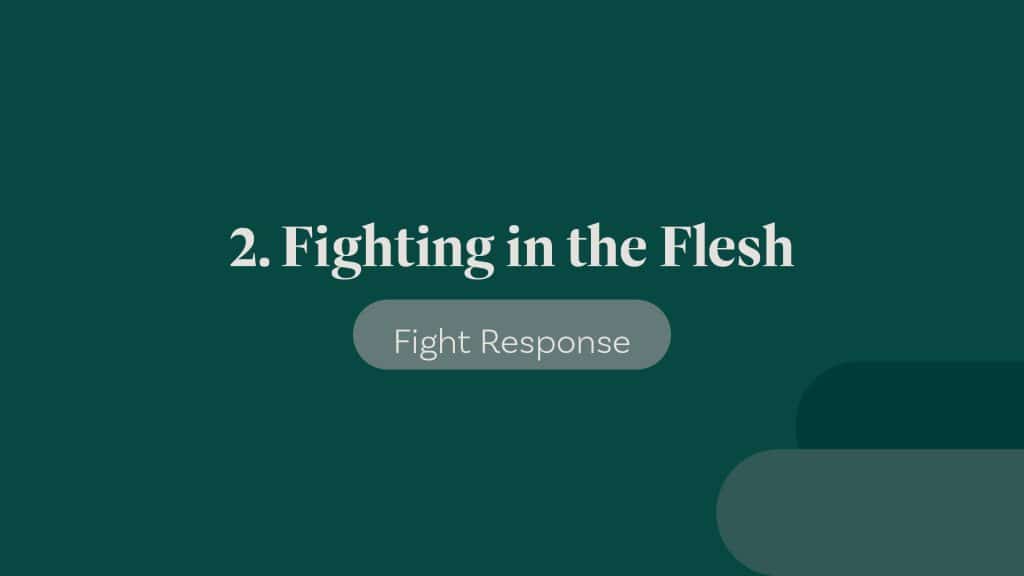
The second scene is Peter fighting in the flesh. This is his fight response.
Here, Peter goes from sleeping to fighting. Can anyone relate to an oscillating spiritual journey? It’s like, I didn’t try hard enough, so now I’m going to kill the enemy!
And you know what? He missed! Peter was going for the head, and he got the ear of the guard. And the other disciples were like, “Lord, should we be fighting?” But Peter’s like, Ready, shoot, aim! He’s out of his mind about it.
Peter was trying to do everything in his own way still; he hadn’t learned the way of the cross yet.
Do you push too hard sometimes? Do you try and force it? Do you try and force other people?
Lord, have mercy on me. When I’m stressed, my weakness is to go to fight mode:
- I try and get things done.
- I try to white knuckle it.
- I try to do it on my own.
Three days into the fast—I started with three days, no food—I ate dinner on that Tuesday night, and I thought I had made it. But either during or soon after dinner, my weakness flared up, and I was harsh with my family. I spoke harshly, but that’s old Chad. It flared up again. Then in the morning, I was like, “Rachel, I’m sorry,” and she said, “I’m sorry,” because I just wanted that off of me—I wanted it away. My weakness is actually to try to force things and not surrender.
Christ shows us the way of surrender.
His way has got to be at the heart level for us, not just at the head level.
Jim Putman often says, “Don’t fight like the devil for the things of God.”
Is your life of discipleship a life of white knuckling it? I always wince a little bit when I see people starting to fast, and they bite off more than they can chew because they want to just go for the gold, and you know what? If that’s you, and you’ve already failed, there is grace for that. But I also want to say that it’s okay to confess your weakness and to say, “Lord, would you teach me to be consistent beyond what I’m capable of? Would you teach me the way of Christ? Neither the way of flight nor fight, but the way of surrender?”
3. Peter’s Denial of Christ: Freeze Response
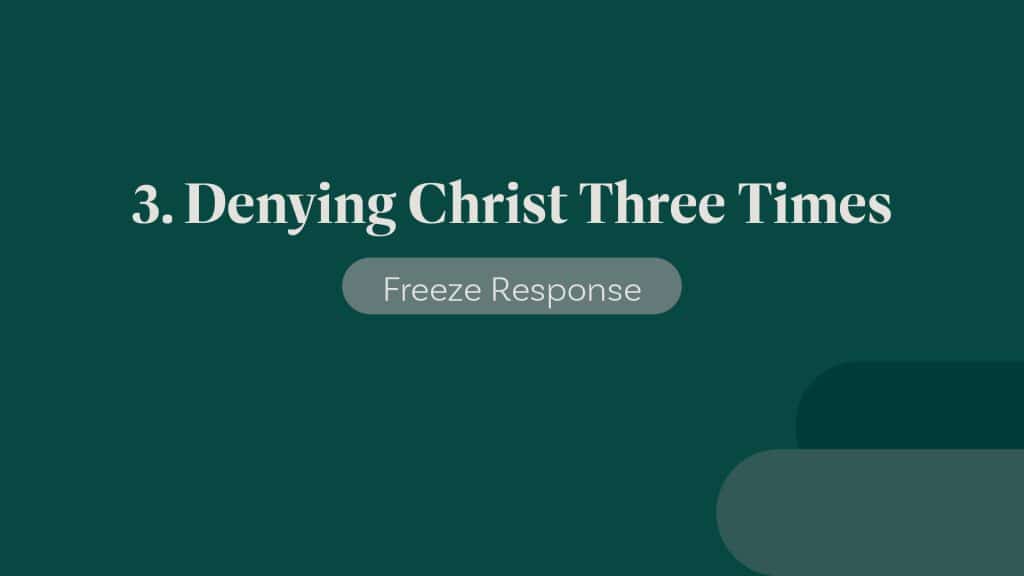
The third scene is Peter denying Christ three times. By this point Peter is in a tailspin. He doesn’t know what to do. He had tried one thing—didn’t work—and tried another thing, which didn’t work either.
So it says he followed Jesus at a distance into the courtyard of the high priest. He didn’t want to get too close, but he didn’t want to run away either. He just kind of froze.
And it was cold that night, which is why they had a fire in the courtyard.
Denial, Distortion #1: God’s Identity
Someone said, “You’re one of his disciples.”
And Peter says, “I don’t know him.”
The first deception of the enemy within our hearts is a deception about who God is.
A major way the enemy can start to sift us—to start to really attack us—is to distort who God is to us.
“I don’t know him.”
And maybe Peter felt like he didn’t know him anymore. Maybe he thought he knew him until Jesus was not that warrior he hoped he would be. It’s the last minute of his regular ministry on earth and my Messiah is going to die like a rebel on a cross! I don’t know him.
Denial, Distortion #2: Our Identity
“You were one of his disciples.”
He says, “That’s not me.”
This is the second distortion. The enemy lies to us by confusing us about who we are.
That’s not him and that’s not who I am.
Denial, Distortion #3: Blatant Lying
And then the third one is, “I don’t know what you are saying.” This is just a straight-up lie.
They said, “You’re one of his disciples,” and he says, “I don’t know what you’re talking about.”
It was in this very moment of his greatest weakness that he received the gaze of the eyes of Christ.
It says that he saw Jesus, and Jesus stared at him.
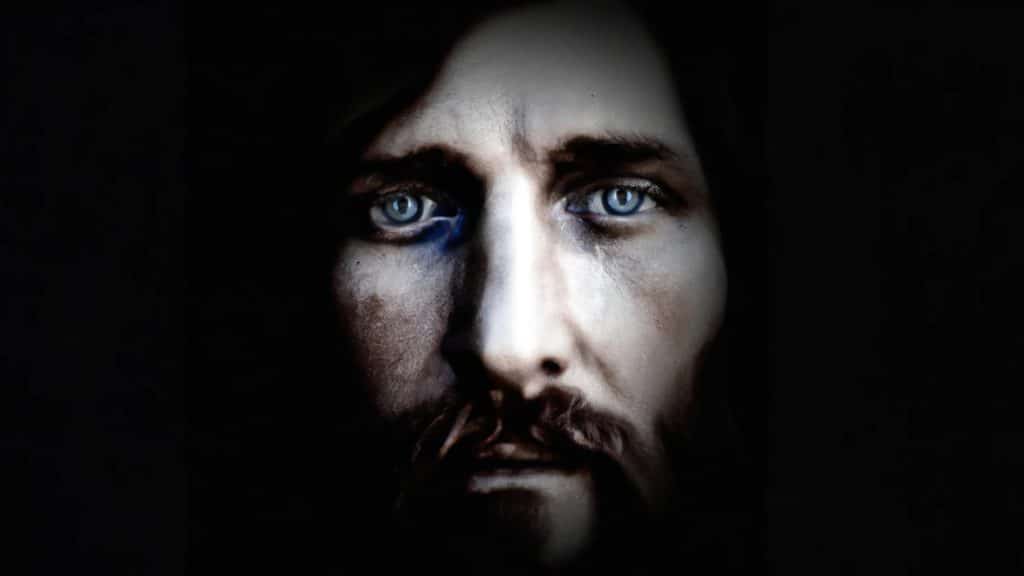
Now, I don’t know how the courtyard was set up. I don’t know how the house of the high priest was arranged, but somehow the eyes of Peter met the eyes of Christ—and in Peter’s worst moment. The one person he wouldn’t want to see him, saw him with no words. But his eyes spoke everything in that moment.
What did the eyes of Christ say to Peter?
Well, whatever they said, it caused Peter to leave the courtyard and weep bitterly. Not the soft quiet cry, but the ugly cry.
I’ve heard it said that:
Children learn who they are in the mirror of their parents’ eyes.
Who do you think God sees when he looks at you at your worst? Sometimes silence speaks loudly. The eyes are the window to the soul, and I believe that Jesus was speaking in this moment everything he had already said to Peter, and Peter was faced with it: What was this monster inside of him? He was ashamed.
What Jesus didn’t do was turn his face from him, because I think Jesus believed in what God could do to redeem Peter in his very weakest.
Do you believe it? That the eyes of Christ are not ones of condemnation and shame, but ones of discipleship, prodding you, raising you up, teaching you, and training you in your very weakness to be like him? His eyes are:
- Full of grace and truth
- Full of love and compassion
- Full of leadership and strength
Peter knew it all at once, I think.
And it was too much to bear, but it was the very eyes of Christ that were teaching him in that moment: I won’t abandon you; I haven’t given up on you, but I see you in that moment.
In your life and in mine—and maybe it’s more often than we’d like to admit—what we do in that moment is so important. And what Peter did is admirable:
Peter chose to allow God to see his true self.
But he also saw who Christ saw him to be. We have to, in order to experience authentic transformation, allow our authentic person to experience the authentic Christ.
The only way that we can experience true transformation is when who we really are is exposed to who Christ really is.
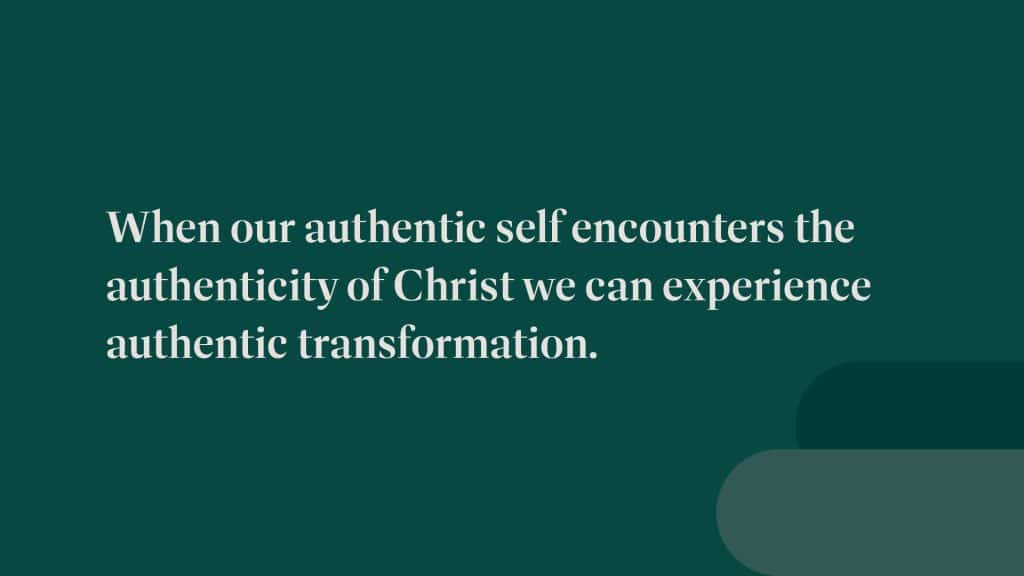
And that lets him change the real us. So what I want to plead with you is what I think God pleads with us: God pleads, “Allow me into that moment.” Because if you can let him transform you at your weakest, then strength is simple. In fact, it’s at your darkest that he does the most work. When we’re at the mountain top, we can see far, but when we’re in the valley, while we can’t see far, that’s when we grow the most. That’s where the real growth comes from.
So what I want to encourage you with today is this: Don’t see your moments of weakness as utter failure; see your moments of weakness as a window into the place where you are in your discipleship journey.
Then, ask God, “Would you change even that? Would you redeem me at my worst?”
We’re only as weak as our weakest moments. And if he will strengthen us at our weakest moment, then we can be strong in Christ, because it’s Christ strengthening us.
- It’s not about our becoming strong.
- It’s not about our learning how to fast in the flesh.
- It’s not about our just trying to hold on.
No, it’s learning a different way of strength. It’s Christ’s strength, and he shows us how to do it.
He moves us from weak and authentic to strong and authentic.
And that’s possible in Christ! That’s what the eyes of Christ, I think, were speaking to Peter—grace and forgiveness but also truth, training, and future hope.
- So receive his exhortation to pray. When you feel weak, confess where you’re really at.
- Receive his rebuke—gentle or firm as it might be—when you pull out the sword to try and white knuckle it and do it your own way and fight.
- And receive his piercing gaze of love and conviction when he doesn’t say anything and just sees you.
- Let Christ look at you,
- Let Christ say, “No more of this,” and
- Let Christ say, “Pray so that you will not fall into temptation.
We’re gonna have a time where you can express at the altar even now your weakness, your vulnerability: “God, I’ve been trying to do it on my own. Would you please do it as we work together?” You might come down and just say, “God, I’ve been asleep, but would you wake me up?” Or you might say, “God, I’ve given up on your hope in me of what you can do.”
There’s only two paths on the discipleship journey: the one of authenticity or the one of facade. And let me just tell you, one works and one doesn’t work. God knows that we can’t fake it. Allow your journey to be the same on the inside as it is on the outside. Don’t be afraid of that.
So if you would, I invite you to come. I invite you to kneel in your place. I invite you to allow yourself to be you before God today in all of your weakness.
